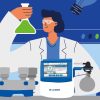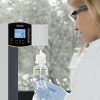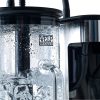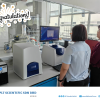- Empty cart.
- Continue Shopping
Learn the Basics of Cleaning Laboratory Glassware
- Posted on
marketing01
- Categories: Bulletin & Updates
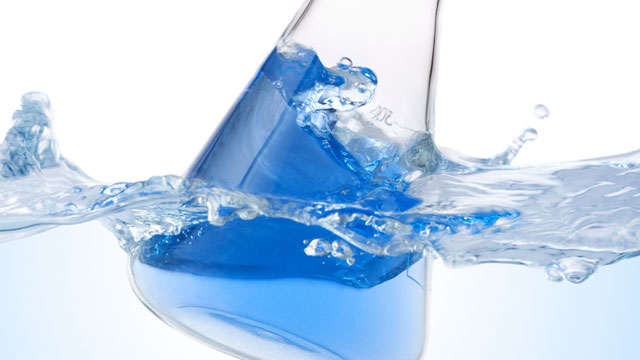
Cleaning laboratory glassware is an essential task that ensures accurate and reliable results in scientific experiments and research. Whether you are a seasoned scientist or a student in a laboratory setting, knowing how to clean glassware properly is crucial. This article will provide you with an insightful guide on the best practices and techniques to clean laboratory glassware effectively. By following these instructions, you will be able to maintain the cleanliness and integrity of your glassware, promoting the success of your scientific endeavors.
Importance of Clean Laboratory Glassware
Keeping a lab clean goes far beyond just a tidy work environment. It’s a fundamental part of ensuring accurate and reliable scientific results. And when it comes to maintaining a pristine lab, clean glassware is of paramount importance. Lab glassware, such as beakers, flasks, and test tubes, is a staple in any scientific setting. It serves as vessel for containing, measuring, and mixing various substances. But let’s face it, glassware can be stubborn when it comes to getting rid of residue and contaminants. That’s why proper cleaning techniques are essential to maintain the integrity of your experiments.
Clean glassware reduces the risk of cross-contamination, inaccurate readings, and experimental errors. Imagining performing an experiment where you unintentionally introduce impurities from a previous experiment into your current one. The results would be skewed and utterly unreliable, which could have detrimental consequences. Plus, dirty glassware can also affect the quality of the scientific samples you’re working with, leading to compromised analysis. So, it’s crucial to take the time to clean your lab glassware thoroughly after each use. By doing so, you not only ensure the accuracy of your data but also prolong the lifespan of your valuable glassware. So, treat your lab glassware with the care and attention it deserves, and you’ll be rewarded with more accurate and reliable scientific results.
Materials and Equipment Needed for Cleaning
When it comes to cleaning laboratory glassware, having the right materials and equipment is essential to ensure a thorough and effective cleaning process. To embark on this cleaning journey, you will need a few key items. First and foremost, you’ll require a good quality cleaning agent. Opt for a mild detergent or specialized laboratory glassware cleaner, as these will be gentle enough to avoid damaging the glass while still effectively removing dirt and residue. Additionally, gather some suitable brushes, specifically designed for cleaning glassware. These brushes come in various sizes and shapes to cater to different types of glassware and hard-to-reach areas. Don’t forget to have an ample supply of lint-free cloths, paper towels, or air drying racks to aid in the drying process after cleaning. Proper drying is crucial to prevent water spots or streaks that can hinder the glassware’s clarity and cleanliness. So, make sure you have all your cleaning materials and equipment ready before embarking on the cleaning process.
In order to achieve pristine laboratory glassware, it is vital to have the right materials and equipment on hand for effective cleaning. A mild detergent or specialized laboratory glassware cleaner will be your trusty companion in banishing dirt and residue without causing harm to the delicate glass. Alongside the cleaning agent, equip yourself with a range of brushes that are designed specifically for glassware cleaning, ensuring you can tackle every nook and cranny. Once the cleaning is complete, it’s time to dry the glassware thoroughly. Whether you opt for lint-free cloths, paper towels, or air-drying racks, the goal is to avoid water spots or streaks that may blemish the pristine surface. By having the necessary materials and equipment prepared, you can embark upon the cleaning process with confidence and guarantee exceptional cleanliness and clarity for your laboratory glassware.
Precautions and Safety Measures
When it comes to cleaning laboratory glassware, taking precautions and implementing safety measures is of utmost importance. Before diving into the cleaning process, it is crucial to ensure your own safety and the safe handling of chemicals and equipment involved. Firstly, always wear appropriate personal protective equipment (PPE) such as gloves, goggles, and lab coats to protect yourself from potential hazards. Secondly, make sure to work in a well-ventilated area to minimize the risk of inhaling harmful fumes. It is also essential to be mindful of the cleaning solution you use. Some solutions may be corrosive or toxic, so read the labels carefully and follow the manufacturer’s instructions. Additionally, it is important to handle broken glassware with caution to prevent injuries. Use a broom and dustpan, or sturdy gloves to pick up the broken pieces and dispose of them properly. Finally, be mindful of the potential dangers of heat when cleaning glassware. Allow hot glassware to cool before handling and use appropriate tools or apparatus to manage high temperatures. By implementing these precautions and safety measures, you can ensure a safe and effective cleaning process for your laboratory glassware.
Step-by-Step Guide to Cleaning Laboratory Glassware
Cleaning laboratory glassware is a crucial task that ensures the accuracy and reliability of scientific experiments. To help you streamline the process, here is a step-by-step guide that will simplify the laborious task and leave your glassware spotless and ready for use.
Firstly, start by gathering all the necessary equipment. You’ll need hot water, detergent, a brush with soft bristles, and ethanol, a commonly used solvent in laboratories. Begin by rinsing the glassware with hot water to remove any visible residues or contaminants. Then, immerse the glassware in a solution of detergent and warm water. Gently scrub the glassware using the soft-bristled brush, paying extra attention to stubborn stains or dried-on substances. Rinse thoroughly with hot water, ensuring all traces of detergent are removed.
Next, comes the crucial step of using ethanol to ensure that the glassware is properly sterilized. Ethanol possesses excellent antimicrobial properties, making it ideal for laboratory use. Liberally apply the ethanol to the glassware, and let it sit for a few moments to allow it to penetrate and dissolve any remaining impurities. Finally, rinse the glassware thoroughly with hot water to eliminate any traces of ethanol.
By following this meticulous step-by-step guide, your laboratory glassware will be sparkling clean and ready for use in your scientific experiments. Remember, maintaining cleanliness and hygiene in the laboratory is vital for accurate and reliable results. Happy cleaning!
Techniques for Removing Stubborn Contaminants
Removing stubborn contaminants from laboratory glassware can be a challenge, but with the right techniques, you can ensure thorough cleanliness. One important step in this process is drying the glassware properly. After washing with water, it is crucial to remove all traces of moisture to prevent further contamination. To achieve this, you can use a variety of effective methods. One technique involves using compressed air to blow away any remaining water droplets from the glassware’s surface. This can be particularly useful for intricate or hard-to-reach areas. Another option is to use a drying oven or a heating source to evaporate the water. By exposing the glassware to heat, any remaining moisture can be quickly eliminated. Additionally, using a drying agent such as silica gel can help absorb the remaining moisture effectively. By employing these techniques, you can ensure that your laboratory glassware is not only clean but also dry, ready for the next experiment or analysis.
It is essential to pay careful attention to the drying process of laboratory glassware to remove stubborn contaminants effectively. After rinsing with water, it is vital to ensure the glassware is completely dry to prevent the accumulation of any residual contaminants. There are several techniques that can be employed to achieve this. One method involves using compressed air to blow away any remaining droplets from the glassware’s surface, especially in hard-to-reach areas. Alternatively, the use of a drying oven or heat source can effectively evaporate any remaining moisture. This will aid in eliminating stubborn contaminants and ensuring the glassware is thoroughly clean. Additionally, incorporating a drying agent such as silica gel can help absorb any residual moisture. By diligently applying these techniques, laboratory glassware can be cleaned and dried sufficiently, allowing for accurate and reliable experimental results.
Drying and Storing Laboratory Glassware
Once the laboratory glassware has been thoroughly cleaned, the next important step is to ensure proper drying and storing. This is crucial to maintain the integrity and longevity of the glassware. After washing the glassware with warm soapy water and rinsing it thoroughly, gently pat it dry with a clean lint-free cloth. Avoid using abrasive materials that could scratch or damage the glass. Once dry, inspect the glassware for any remaining stains or residue. In case of stubborn stains, a soak in a mild acid solution may be necessary. However, it is important to handle acids with caution and follow the appropriate safety protocols.
After the drying process, it is essential to store the glassware properly to prevent any breakage or contamination. Arrange the glassware in a dedicated storage area away from high-traffic areas and excessive humidity. Use a sturdy and stable shelf or cabinet to prevent the glassware from falling or tipping over. Consider using glass-specific storage racks or separators to minimize the risk of breakage. Additionally, it is recommended to label or organize the glassware based on its intended use or type. This will make it easier to locate specific items when needed, and also reduce the likelihood of accidental mix-ups or cross-contamination. By following these drying and storing practices, you can ensure that your laboratory glassware remains in optimal condition, promoting accurate and reliable scientific experiments.
In conclusion, maintaining clean laboratory glassware is of utmost importance in ensuring accurate and reliable scientific results. This is achieved through proper cleaning techniques and the use of necessary materials and equipment. It is crucial to follow precautions and safety measures to protect oneself and preserve the integrity of the experiments. By following a step-by-step guide, one can effectively clean laboratory glassware and remove stubborn contaminants. Lastly, proper drying and storing techniques are essential to prolong the lifespan of the glassware and maintain its cleanliness. By prioritizing these aspects, scientists can conduct experiments with confidence and achieve accurate outcomes.


